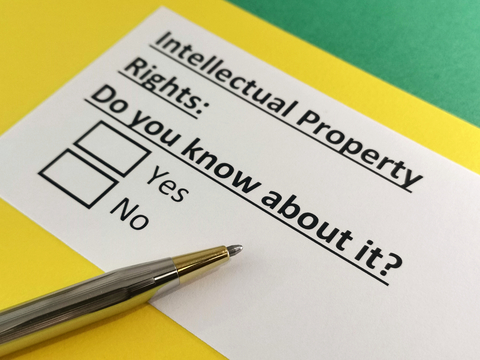Although patents, copyrights, and trademarks rights provide intellectual property (IP) protections, they are different and serve different purposes. To understand the types of protections associated with these IP rights, consider an example where a company, Smart Company, makes and sells Bright ovens to the public. Smart Company may use patents, copyrights, and trademarks to protect various IP assets associated with its Bright ovens. Below, we briefly describe each IP right and how it may be used by Smart Company.
Patents
A United States (US) patent for an invention is the grant of a property right to exclude others from importing, making, using, offering for sale, or selling the invention in the US. The US patent does not grant the right to make, use, offer for sale, sell, or import the invention, but instead grants the right to exclude others from making, using, offering for sale, selling, or importing the invention.
US patents are issued by the United States Patent and Trademark Office (USPTO) and are effective only within the US, U.S. territories, and U.S. possessions. Generally, the term of a new patent is 20 years from the date on which the application for the patent was filed in the US or, in special cases, from the date an earlier related application was filed, subject to the payment of maintenance fees.
Who may apply for a US patent:
- the inventor(s),
- a person to whom the inventor has assigned or is under an obligation to assign the invention, with certain exceptions,
- legal representatives of a deceased inventor, that is, the administrator or executor of the estate, or
- legal representative of a legally incapacitated inventor, (e.g., guardian).
There are three types of patents:
1) Utility patents may be granted to anyone who invents or discovers any new and useful process, machine, article of manufacture, or composition of matter, or any new and useful improvement thereof;
2) Design patents may be granted to anyone who invents a new, original, and ornamental design for an article of manufacture; and
3) Plant patents may be granted to anyone who invents or discovers and asexually reproduces any distinct and new variety of plant.
Trademark
A trademark is a word, name, symbol, or device used to indicate the source of product in trade and to distinguish that product from the products of others. A servicemark is a trademark that identifies and distinguishes the source of a service rather than a product. “Trademark” and “mark” may be used to refer to both trademarks and servicemarks.
Trademark rights may be used to prevent others from using a confusingly similar mark, but not to prevent others from making the same goods or from selling the same goods or services under a clearly different mark.
US trademarks that are used in interstate or foreign commerce may be registered with the USPTO. Although federal registration of a mark with the USPTO is not mandatory, it has several advantages. Registration of a mark with the USPTO provides (a) notice to the public of the registrant’s claim of ownership of the mark, (b) legal presumption of ownership nationwide, and (c) exclusive right to use the mark on or in connection with the goods/services listed in the registration.
Copyright
US copyright offers protection to authors of “original works of authorship” including literary, dramatic, musical, artistic, and certain other intellectual works, both published and unpublished. The copyright protects the form of expression rather than the subject matter of the writing. For example, a description of a machine could be copyrighted, but this would only prevent others from copying the description; it would not prevent others from writing a description of their own or from making and using the machine.
US Copyright law generally gives the owner of copyright the exclusive right to reproduce the copyrighted work, to prepare derivative works, to distribute copies or phonorecords of the copyrighted work, to perform the copyrighted work publicly, or to display the copyrighted work publicly. Copyrights may be registered with the Copyright Office of the Library of Congress.
How Smart Company may apply for US IP Rights
Smart Company may file an application for a US patent for any new, useful, and non-obvious feature associated with its Bright ovens. For example, if Smart Company invents a new self-cleaning feature, Smart Company may file for a US patent on the new self-cleaning feature.
Smart Company may also file for a trademark for “Bright” ovens. With this trademark, consumers will distinguish Smart Company’s ovens i.e., Bright ovens, from those sold by others.
Smart Company may also obtain a copyright for a description of its Bright oven. Smart Company’s copyright would only prevent others from copying the description; it would not prevent others from writing a description of their own or from making and using the Bright oven.
Note:
To obtain IP rights outside the US, one must file for the IP right in the appropriate jurisdiction. For example, if Smart Company wants to obtain patents in the US, Japan, and China, Smart Company must submit a patent application in each jurisdiction and must successfully prosecute the patent application in each jurisdiction.

